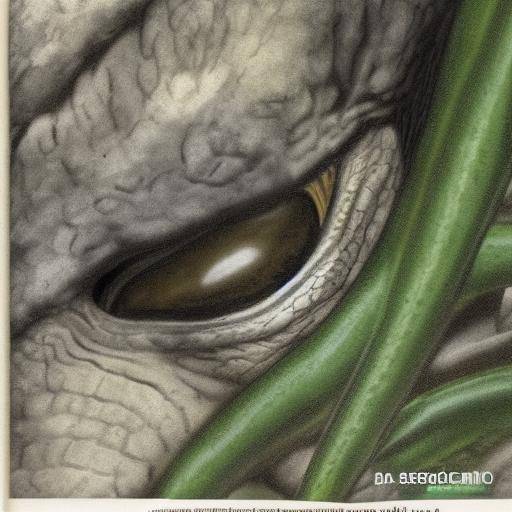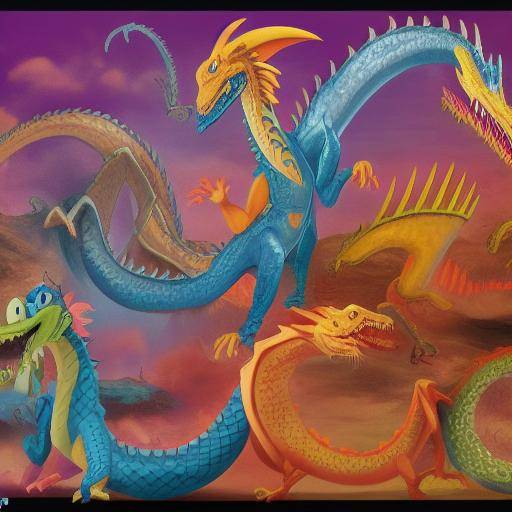
Since time immemorial, the legend of the basilisco has fascinated and terrified human beings. Commonly known as "the king of serpents", the basilisco is a legendary creature capable of petrifying with the gaze and causing chaos around it. In this article, we will explore the mysticism and reality behind this mythological being, its history, cultural meaning and much more.
Introduction
The basilisco, an essential part of folklore and European mythology, has been the subject of numerous legends, literary works and artistic representations. This article will provide a profound view of this legendary creature, analyzing its origins, its influence on popular culture and its function in the historical context.
History and Origins of the Basilisco
The myth of the basilisco has its roots in ancient Greece, where it was known as "basilískos", which means "king". The original description of the creature is that of a venomous snake with a match, capable of killing with just one look. One of the first references appears in the accounts of Plinio el Viejo, in the 1st century AD, where his lethal nature and his ability to infuse terror are detailed.
The basilisco has also been mentioned in the literature of the Middle Ages, where supernatural properties were attributed and associated with alchemy and astrology. The belief in its existence and real danger persisted for centuries, which led to the search for forms of protection against its lethal gaze.
The Basilisco in Popular Culture
Over the centuries, basilisco has been a recurrent theme in literature, cinema and other means of artistic expression. His representation has varied from a fearful creature to a symbolic figure of power and dominion. At present, the basilisco remains a symbol of fascination and fear, present in popular culture through games, novels and films.
Search by the Basilisco: Reality vs. Legend
Despite its prominence in European mythology, there is no scientific evidence to support the existence of basilisco as a real creature. The description of the basilisco has been associated with various species of poisonous snakes, which has contributed to the development of the legend. However, its fantastic nature has endured through the centuries, keeping alive its influence on popular culture.
In short, the basilisco represents a fascinating example of how mythology and reality intertwine to create a creature that wakes up intense emotions and perpetuates its memory over time.
Conclusion
The basilisco, with its ability to petrify with its gaze, has left an indelible mark on human imagination throughout history. Although their real existence remains in the domain of legend and fantasy, their legacy endures as a reminder of the power of stories to captivate and astonish future generations.
FAQs
1. Is the basilisco a real creature?
There is no scientific evidence to support the existence of an animal with the characteristics of the basilisco described in mythology. Its nature is mainly legendary.
2. What is the origin of the scale myth?
The myth of the basilisco has its roots in ancient Greece and has spread through different cultures throughout history.
3. Why is the basilisco considered the "king of snakes"?
The term "basilisco" derives from the Greek word meaning "rey". His title of "king of serpents" is due to his representation as a supreme and dangerous creature in mythology.
4. What literary works does the basilisco appear in?
The basilisco has been a recurrent theme in literature, from antiquity to present, appearing in works of authors such as Plinio el Viejo, Geoffrey Chaucer, and J.K. Rowling, among others.
5. What is the symbolic meaning of basilisco in popular culture?
The basilisco has been represented as a symbol of power, evil and fear, as well as a challenge to the bravery of the hero.
6. What similarities exist between the basilisco and other mythological creatures?
The basilisco shares similarities with other mythological creatures such as the dragon, the hydr and the chimera, in terms of their dangerous nature and their ability to infuse fear.
Dear reader, we trust that this article has shed light on the fascinating history and cultural relevance of the basilisco, a legendary creature that continues to captivate the popular imagination today.
Remember that while basilisco may not exist in the physical world, its shocking influence on mythology and art continues to amaze the seekers of emotions and knowledge around the world. Thank you for joining us on this journey through the realm of basilisco!





